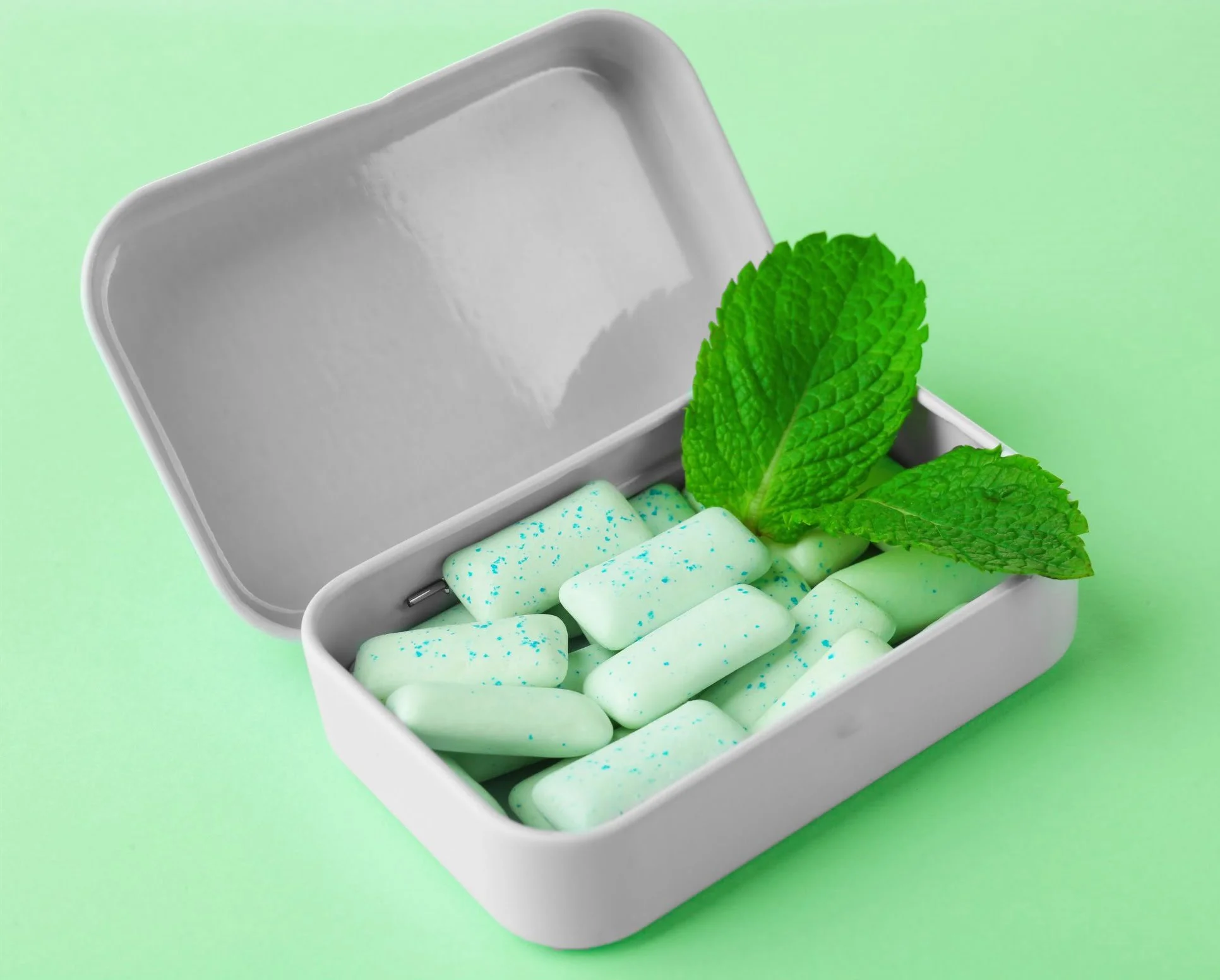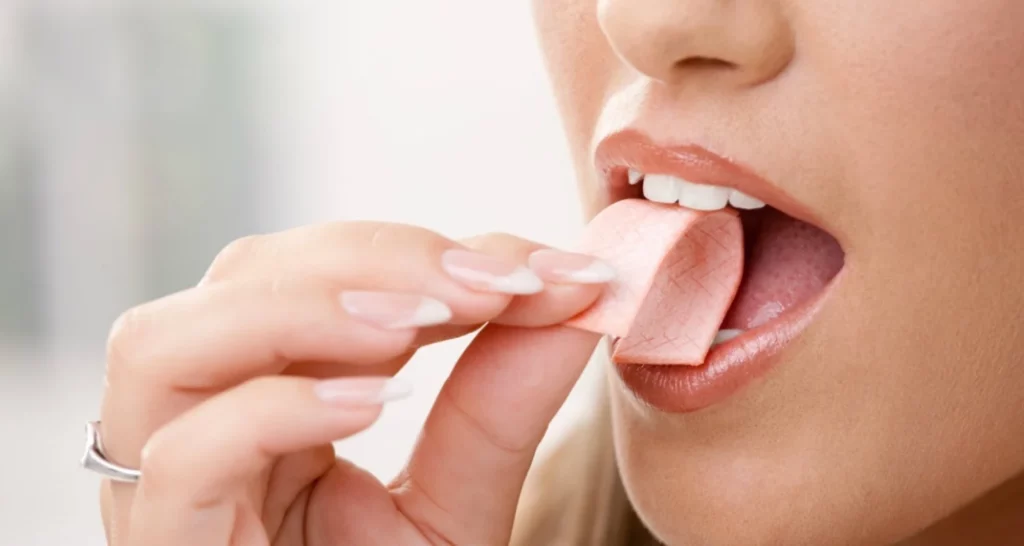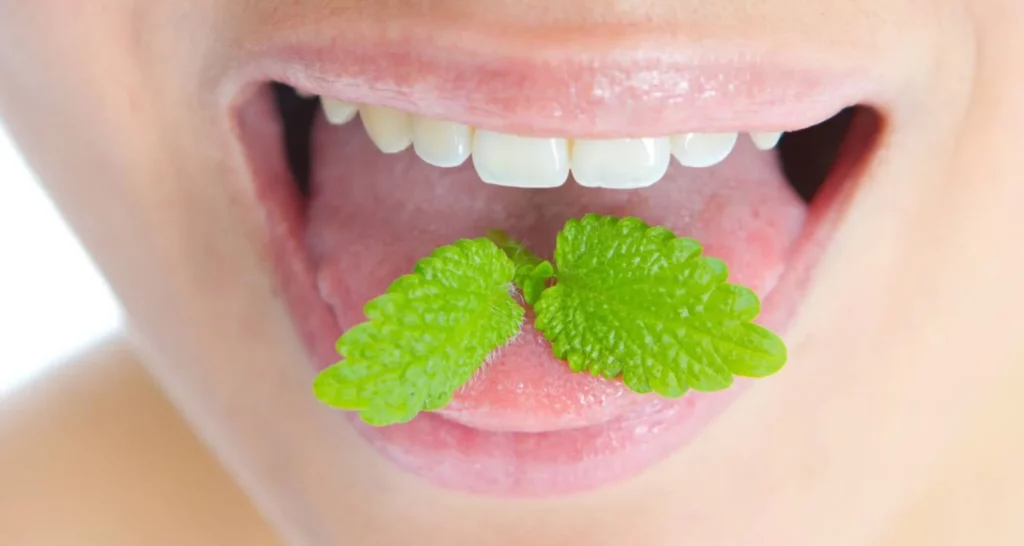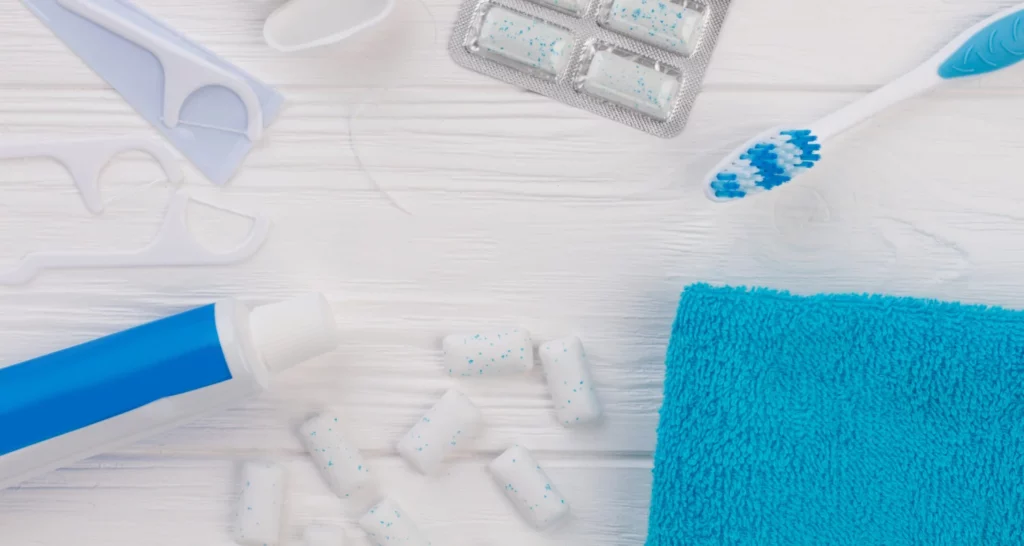Last Updated on: 13th December 2025, 05:32 am
Unlock the truth behind sugar-free gum and its impact on dental wellness. Our insightful guide reveals the top 5 benefits and how this gum can enhance your oral health routine.
Chewing gum, dating back to the ancient Maya, is a billion-dollar industry. It is estimated that 374 billion pieces of chewing gum are sold worldwide every year. However, traditional chewing gum can have adverse effects on teeth and general health, due to the increased daily sugar intake.
Sugar-free chewing gum, the only product considered for the American Dental Association Seal of Acceptance, has been shown to offer oral health benefits. As we delve into the science behind sugarless gum and its impact, we uncover the reasons behind its growing popularity and offer 5 benefits for your oral health.
The Science Behind Sugar-Free Gum and Oral Health
Excluding sugar from chewing gum aligns with the principles of ADA and WHO. The World Health Organisation suggests limiting sugar intake to 10% or less of energy intake for optimal oral health, while the ADA states that chewing sugarless gum may — when added to a regular home oral care routine of twice daily brushing with fluoridated toothpaste and daily cleaning between teeth — contribute to reducing caries risk.
A considerable amount of scientific data back the benefits of sugar-free chewing gum. A systematic review of 19 randomized controlled trials concludes that sugar-free sweetened with polyols such as xylitol, sorbitol, mannitol or maltitol, are not a substrate for oral bacteria to use as an energy source, meaning that they reduce cavity risk. Other studies have been done on the effects of sugar-free gum on saliva production. The physical action of chewing as well as the flavors have been shown to increase saliva production.
Dental erosion stems from the acidic substances present in our diets, including citrus fruits, fruit juices, and carbonated beverages. These acids erode the enamel that protects the teeth, stripping away the essential minerals that compose the enamel. Fortunately, chewing sugar-free gum can mitigate this acidic onslaught by boosting saliva production.
Saliva plays a crucial role in restoring the minerals lost from the enamel, typically taking about an hour to replenish these essential components. Engaging in a 20-minute session of chewing sugar-free gum after consuming food or drinks can expedite saliva flow, thereby accelerating the mineral replacement process.
5 Key Benefits of Chewing Sugar-Free Gum.
Chewing gum and dental health seem to be intertwined. Here are some of the ways sugar-free gum can benefit oral health:
1. Cavity prevention
Besides the fact that the sugar in sugar-free gums is non-cariogenic, chewing gum can reduce cavity risk. When you chew gum, your mouth produces more saliva. Saliva neutralizes the acids in your mouth that are responsible for cavities and erosion, as well as washes away food particles.
2. Strengthening enamel
Sugar-free gums can stimulate saliva which is rich in calcium. It may contain ingredients like xylitol or casein phosphopeptide-amorphous calcium phosphate (CPP-ACP) that help remineralize and strengthen tooth enamel.
3. Freshening breath
The process of chewing gum can wash away food particles and bacteria, aiding in the reduction and control of bad breath.
4. Reducing dry mouth
Sugar-free gum can improve dry mouth symptoms by stimulating saliva production. Saliva helps keep the mouth moist and washes away food particles and bacteria that contribute to bad breath and cavities.
5. Assisting smoking cessation
Chewing sugar-free gum can be a helpful tool for those trying to quit smoking as it can reduce cravings and the oral fixation that often accompanies the habit.
Chewing Gum vs Oral Hygiene Practices.
Brushing twice a day and flossing every day is the gold standard of at-home oral care. The process of brushing and flossing physically removes food particles, bacteria and plaque. In addition, fluoride toothpaste and mouthwash kill and wash away bacteria, preventing tooth decay and promoting oral health.
Sugar-free chewing gum, on the other hand, is a good option to remove bacteria and food particles between meals; and it increases saliva flow. However, even though sugarless chewing gum may be a good addition to your oral health routine, it should not substitute brushing and flossing.
Guidelines for Choosing the Right Sugar-Free Gum
When looking for chewing gum, it’s important to avoid certain types that cause cavities and increase daily sugar intake and calories. Gums containing sugars such as aspartame, sorbitol, xylitol, or mannitol, are safe because these ingredients, even though sweet, are not cariogenic. To help make a decision, look for the ADA Seal of Acceptance. It indicates that the product is safe and effective when used as directed and meets the claims made on the product’s label.
Potential Risks and Precautions
While sugar-free gums are generally considered safe, excessive chewing can have side effects. Chewing for a longer duration can increase the risk of temporomandibular diseases. According to one study, the participant group experienced more jaw clicking and pain compared to the group who didn’t chew gum. Also, acidic flavors will wear down the enamel if used for long periods of time.
In some cases, chewing gum can cause gastrointestinal problems such as bloating, gas or diarrhea.
Conclusion and Recommendations
Preventing tooth decay and improving oral health require good daily habits; chewing sugar-free gum before meals seems to be a convenient and affordable choice in the right direction. It can increase saliva production and remineralize the enamel while masking bad breath. Overall, chewing sugar-free gum is a convenient and enjoyable way to promote oral health. However, it’s important to choose sugar-free gum, as the type containing sugar can contribute to cavities and other oral health issues.
Frequently Asked Questions
When is the optimal time to chew sugar-free gum?
Chewing sugar-free gum shortly after meals is highly recommended. Engaging in this practice for up to twenty minutes can enhance saliva production, thus rapidly neutralizing the acids in your mouth. Note that plaque begins to form again approximately thirty minutes after brushing your teeth.
How often can I chew sugar-free gum each day?
It’s advisable to chew sugar-free gum following meals and snacks, especially when you’re out and about, to maintain oral hygiene.
Is it safe for children to use sugar-free gum?
Children under seven years old are generally advised against chewing gum, primarily due to choking risks and other concerns. However, parents should ultimately make this decision based on their child’s specific needs and abilities.
Can vegetarians chew sugar-free gum?
While some chewing gums contain animal-derived glycerine, making them unsuitable for vegetarians, the majority of sugar-free gums now use a vegetarian-friendly form of non-animal glycerine. Vegetarians should look for these options.
Is sugar-free gum compatible with dentures or braces?
Individuals with certain types of dentures might find that sugar-free gum adheres to both their teeth and the palate of the denture, which can become problematic. Moreover, chewing gum is not recommended for those wearing braces due to the potential for gum to stick to the orthodontic apparatus.
Should I still brush my teeth if I chew sugar-free gum?
Absolutely. Chewing gum is not a substitute for brushing. It’s crucial to brush your teeth twice daily using fluoride toothpaste and to clean between your teeth with interdental brushes or floss at least once a day to ensure that the teeth and gums remain healthy.
Share:
References
1. Mathews JP. (2009). Chicle: The Chewing Gum of the Americas, from the ancient Maya to William Wrigley. The University of Arizona Press.
2. Mickenautsch, S., Leal, S. C., Yengopal, V., Bezerra, A. C., & Cruvinel, V. (2007). Sugar-free chewing gum and dental caries: a systematic review. Journal of applied oral science : revista FOB, 15(2), 83–88. https://doi.org/10.1590/s1678-77572007000200002
3. World Health Organization and the United Nations Food and Agriculture Organization (WHO/FAO) Diet, nutrition and the prevention of chronic diseases (Report 916). Geneva, Switzerland: World Health Organization 2003.
4. Whelan C, Legg T. (Mar, 2018). Are There Any Benefits to Chewing Sugar-Free Gum?. Healthline. https://www.healthline.com/health/sugar-free-gum
5. American Dental Association ADA. (May 2023). Chewing Gum. https://www.ada.org/resources/research/science-and-research-institute/oral-health-topics/chewing-gum
-
Nayibe Cubillos M. [Author]
Pharmaceutical Chemestry |Pharmaceutical Process Management | Pharmaceutical Care | Pharmaceutical Services Audit | Pharmaceutical Services Process Consulting | Content Project Manager | SEO Knowledge | Content Writer | Leadership | Scrum Master
View all posts
A healthcare writer with a solid background in pharmaceutical chemistry and a thorough understanding of Colombian regulatory processes and comprehensive sector management, she has significant experience coordinating and leading multidisciplina...



















